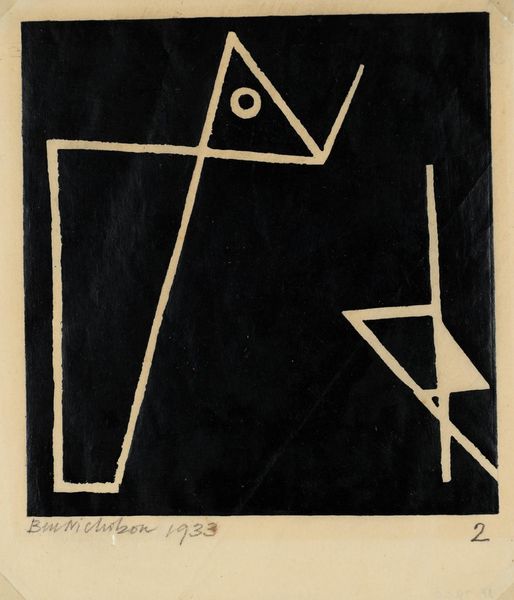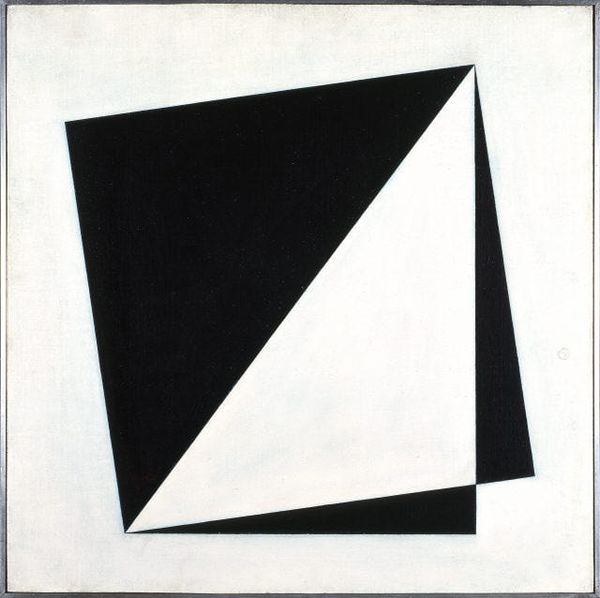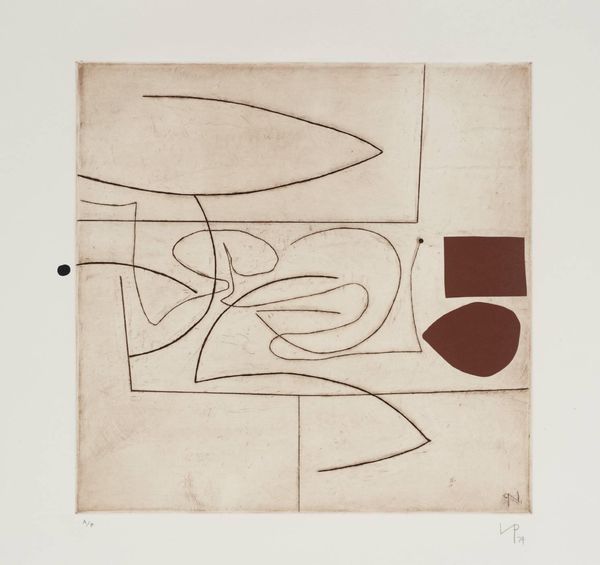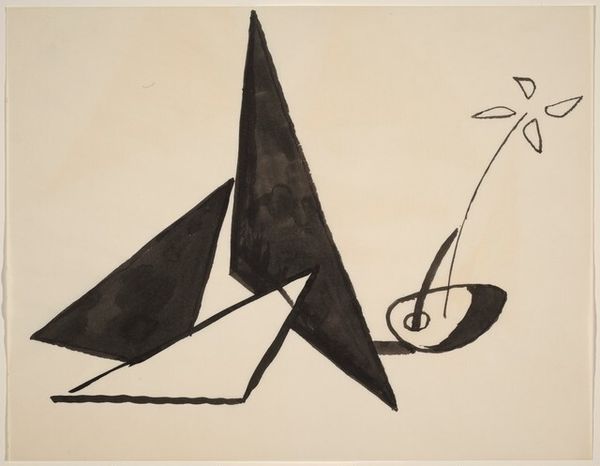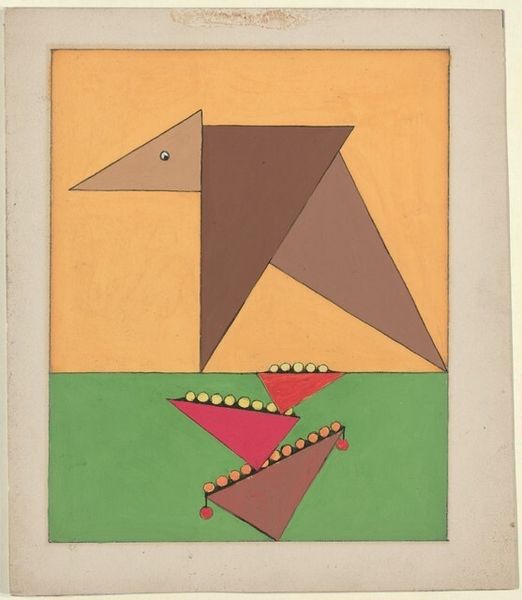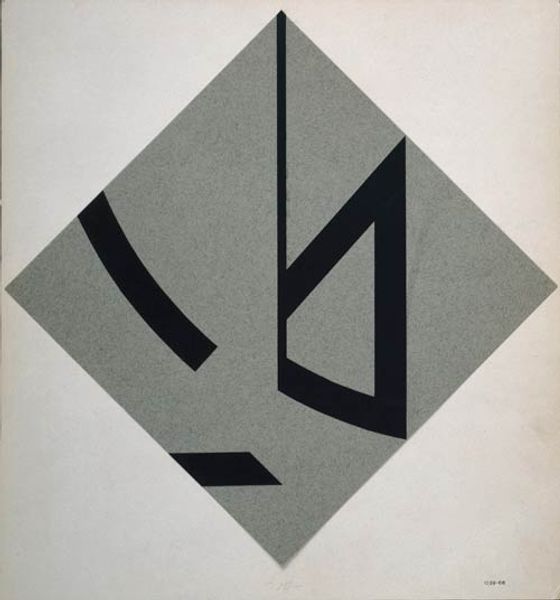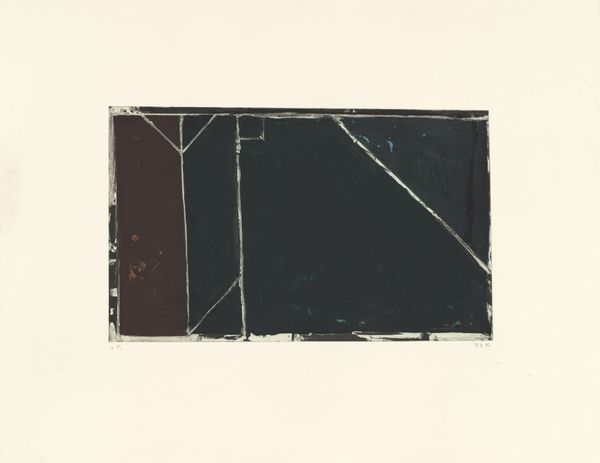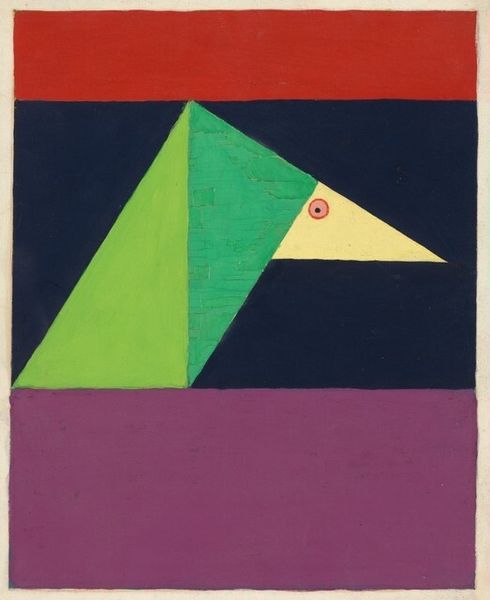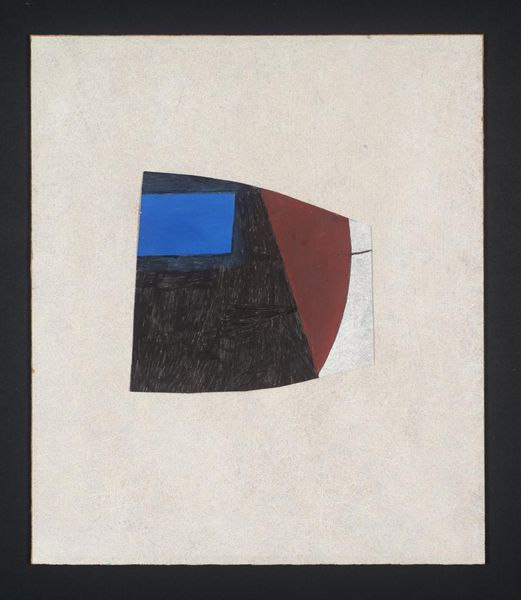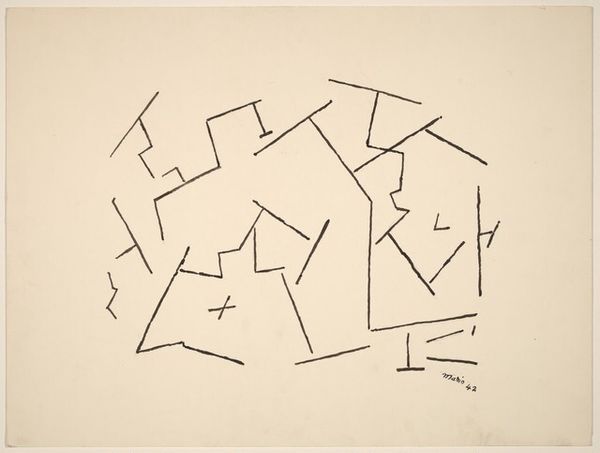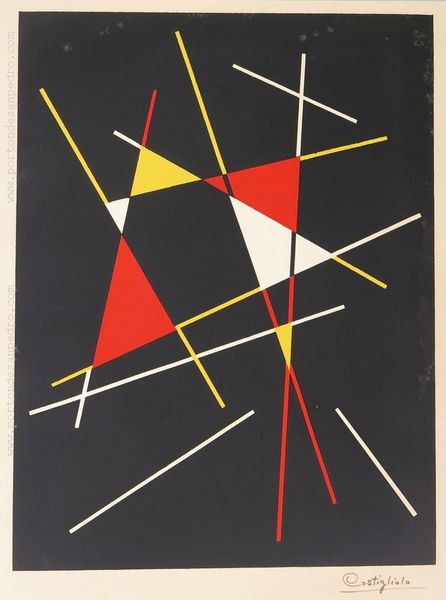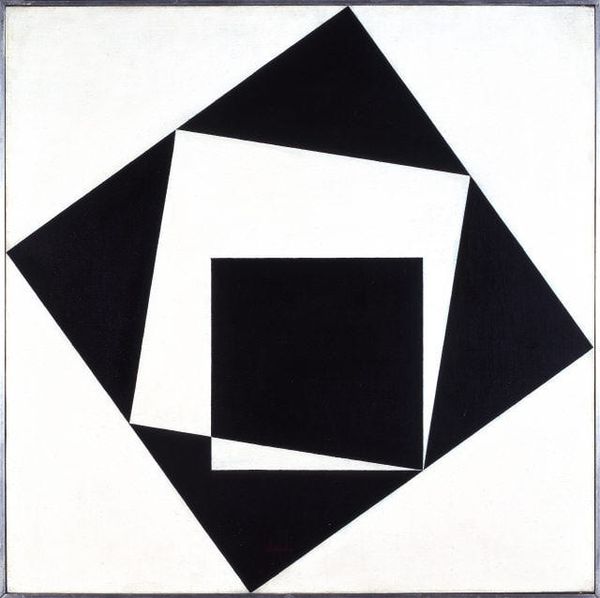
Dimensions: support: 159 x 149 mm
Copyright: © Angela Verren Taunt 2014. All rights reserved, DACS | CC-BY-NC-ND 4.0 DEED, Photo: Tate
Editor: Here we have Ben Nicholson's "Foxy and Frankie (1)" from 1933. The simple geometric shapes on a dark background give it a playful, almost childlike feel, yet there's a definite starkness. What do you make of it? Curator: It's interesting you say "childlike." Consider the social context of 1933; Europe was on the brink of war, and abstraction was a powerful visual language. Could these figures be symbolic? A fox, perhaps slyness; Frankie, a representation of western masculinity? How might their relationship reflect anxieties of the time? Editor: So, it’s less about playful shapes and more about…political commentary? Curator: Potentially. Nicholson was engaging with a European avant-garde deeply concerned with social change. How does the starkness you mentioned play into that feeling? Editor: I see now; it's unsettling, not just simple. Thanks, that gives me a lot to think about. Curator: Indeed, art often holds a mirror to society, reflecting its hopes and its fears.
